鼓浪屿历史国际社区
——以社区为核心的世界遗产申报之路
魏青/WEI Qing
作者单位:清源视野文化咨询有限公司
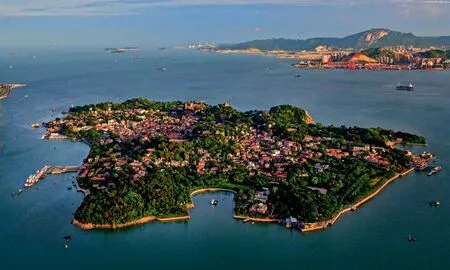
1 鼓浪屿鸟瞰(图片来源:鼓浪屿管委会)
2017 年7 月8 日,鼓浪屿历史国际社区在第41 届世界遗产遗产大会上被列入世界遗产。从2008 年启动申遗准备工作,历经9 年的努力,这个一度被旅游热潮困扰的历史社区,在复兴社区文化,转向可持续发展的路上,踏出了坚实而又影响深远的一步(图1)。
改革开放之后,厦门市政府就针对鼓浪屿丰富的历史文化和景观价值制定了整体保护的基本策略[1]。鼓浪屿于1988 年被列入国家级风景名胜区,也是全国较早启动近现代建筑调查和保护的城区之一,全岛认定了391 栋历史风貌建筑,建立了保护管理体系。但同时,长期以来“公共租界”的身份定位,也使鼓浪屿在公众甚至当地社区的认知中,更多是中国近代受列强欺侮的历史见证。因此,鼓浪屿前一阶段的发展以发挥海岛景观、建筑风格、音乐艺术等方面的吸引力为重点,对文化内涵的挖掘不足。这无形中使很多意义重大的历史遗存处于荒废或不当利用的状态中,而以观光为主的旅游热潮给社区生活环境带来日益严峻的压力和负面影响,加之社区功能向服务于旅游的单一功能强化,教育、医疗等社区公共服务被削减,与鼓浪屿历史有着紧密联系的社区群体逐步迁离。曾经恬静安详并富于艺术气息的住区氛围和独特的社区文化传统难以为继(图2)。

2 旅游业的极速发展与社区人口的衰减(绘制:魏青)

3 厦门装饰风格建筑的发展演变历程(图片来源:参考文献[3])
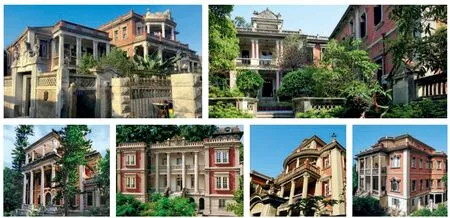
4 鼓浪屿厦门装饰风格建筑的典型代表(图片来源:鼓浪屿管委会)
申遗阶段的遗产资源调查和价值挖掘,从文化意义的角度重新审视鼓浪屿历史国际社区形成发展历程,将其放在19-20 世纪间这一全球化发展进程中关键的时空节点上,在一个狭小、独立的海岛地理单元和因公共地界章程签订而形成的独特社会单元中,梳理从世界各地汇聚于此的文化元素之间以碰撞、对话到融合、发展的过程[2]。特别关注的是闽南文化族群、外来多国侨民和返乡华人华侨3 个文化群体在这个过程中的状态,由事实呈现出的是具有海洋文化特质的华人群体对传统文化的秉承,对外来文化的包容借鉴和开拓进取精神,使鼓浪屿得以在20 世纪初摆脱一般殖民地的发展路径,持续吸纳越来越多的外来和现代文化元素,并在融合中产生以“厦门装饰风格”建筑[3]为代表的创新发展 (图3、4)。这一价值认知,帮助遗产地社区群体从积极的角度理解其祖辈留下的生活场所作为文化遗产的独特意义,在世界遗产的突出普遍价值与社区个体之间建立起具体而紧密的联系,成为社区通过遗产保护恢复文化自信的基础。


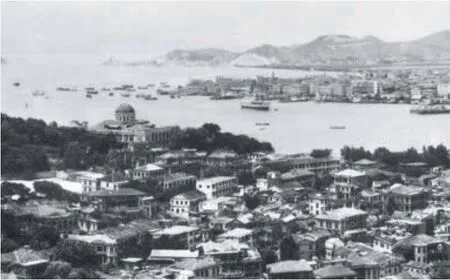
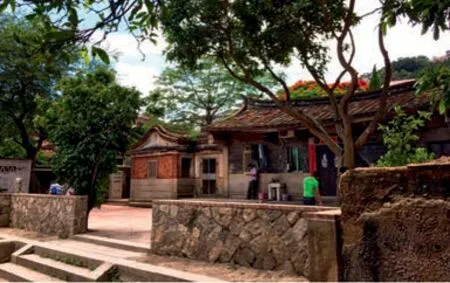





5 鼓浪屿3个发展阶段的形态特征和典型遗存分布
基于上述价值认知,申遗阶段对遗产要素从3个角度做了更为系统的构建。一是发展进程,梳理本土文化积淀(鸦片战争以前)、外来文化传播(鸦片战争至1902 年公共地界章程签订之间)和多元文化融合(1902 至太平洋战争爆发之间)这3 个主要阶段的典型历史遗存,进而关注那些能阐释不同阶段典型建筑风格、功能之间发展过渡过程的非典型样例,以确保对一个连续发展进程的完整见证(图5)。二是空间层面,在宏观到微观的不同层次上梳理阐释共存于场景中的中外文化元素间的交错、融合关系,并关注文化元素之间构成的时空对话场景所具有的文化意义。三是从社会形态的角度,梳理历史国际社区的组织结构、运行机制对应的功能载体,文化群体、个体之间的社会脉络,和通过物质遗存呈现的多样化的价值取向。通过上述方式构建的价值载体系统,不仅补充了大量之前被忽略的重要历史遗存(图6),通过更加整体的保护呈现对历史完整、真实的表达,同时在遗产价值和社区生活的空间场所间建立起更紧密的联系,通过对要素特征的认定,使社区在遗产保护的参与上有了具体的对象和明确的方向(图7)。
当历史社区的贡献成为遗产价值的来源,对当代社区的关注、物质遗存与社区共同的健康发展就成为遗产保护路径下最为核心的任务。这其中的重要措施除了针对遗产要素的保护维修和价值展示,还包括将一般申遗项目环境整治方面的工作聚焦在体现文化交流的历史场所的恢复上,在传达遗产价值的同时,提升社区的生活环境品质(图8);将申遗阶段补充认定的遗产要素维修后,尽可能地开放给社区文化生活,特别是承载具有鼓浪屿特色的家庭音乐会、诗歌文学社团艺术活动的文化空间;通过政府引导将高校规划设计专业资源引入社区,每年以工作营的形式帮助社区解决社区生活环境品质提升的具体需求。同时,借鉴历史上鼓浪屿工部局的管理模式,由政府引导组建了由社区户籍居民、非户籍居民、驻岛机构和在岛上从业的行业协会代表组成的社区公共议事会,作为社区利益相关者参政议政的渠道;为引导社区和社会力量参与遗产保护和文化复兴,政府还通过条例立法和制度建设加强对有助于挖掘、传播鼓浪屿遗产价值和文化特色的文化业态投入的鼓励[4]。为了缓解旅游活动和社区生活之间的矛盾,政府下决心于2017 年将日最高游客承载量从原来单纯以景区容量角度测算的65,000 人下调到综合考虑景区承载量和社区舒适度的50,000 人,并在码头航线上分流市民和游客,保障当地居民日常往来的便利的同时,加强对游客引导,以及管理和优化旅游商业业态的合理分布(图9)。
2017 年9 月,时任联合国教科文总干事伊琳娜·博科娃(Irina Bokova)女士亲临鼓浪屿颁发世界遗产证书。在致辞中她认为,鼓浪屿“可以帮助今天全世界的人们理解和实践尊重、包容的价值观并欣赏多样性,这是全球公民精神的重要课堂……而且今天我们比以往更需要这些。”这是国际领域对鼓浪屿遗产价值和当代意义的高度肯定。而就鼓浪屿自身来说,在申遗迎检环节,政府和社区民众齐心协力成功抗击了百年一遇的“莫兰蒂”灾害,不仅保住了社区民众和文化遗产的安全,而且仅用一个月就恢复了社区的正常生活和景区的开放,并在紧迫的救灾过程中,将不幸被台风摧毁的古树以艺术再生的方式原地保留,成为社区生活记忆的载体(图10)。由此可见遗产保护对社区“韧性”和文化创造力提升产生的积极作用。申遗成功之后,当地民间出现了很多致力于挖掘、宣传鼓浪屿历史文化的自媒体。其背后的创作者,有的是老原住民,有的是本地的新生代,也有从外乡来定居于此的新鼓浪屿人。他们的努力,正在激起越来越多的回响。相对于物质遗存的保护与展示,这些发生在社区中的积极转变,才是遗产保护更加令人欣慰的成效,并能让社区对未来的传承发展建立更持久的信心。□

6 申遗阶段补充认定的鼓浪屿遗产核心要素(绘制:魏青)

7 鼓浪屿遗产价值特征要素(图片来源:鼓浪屿管委会,绘制:魏青)
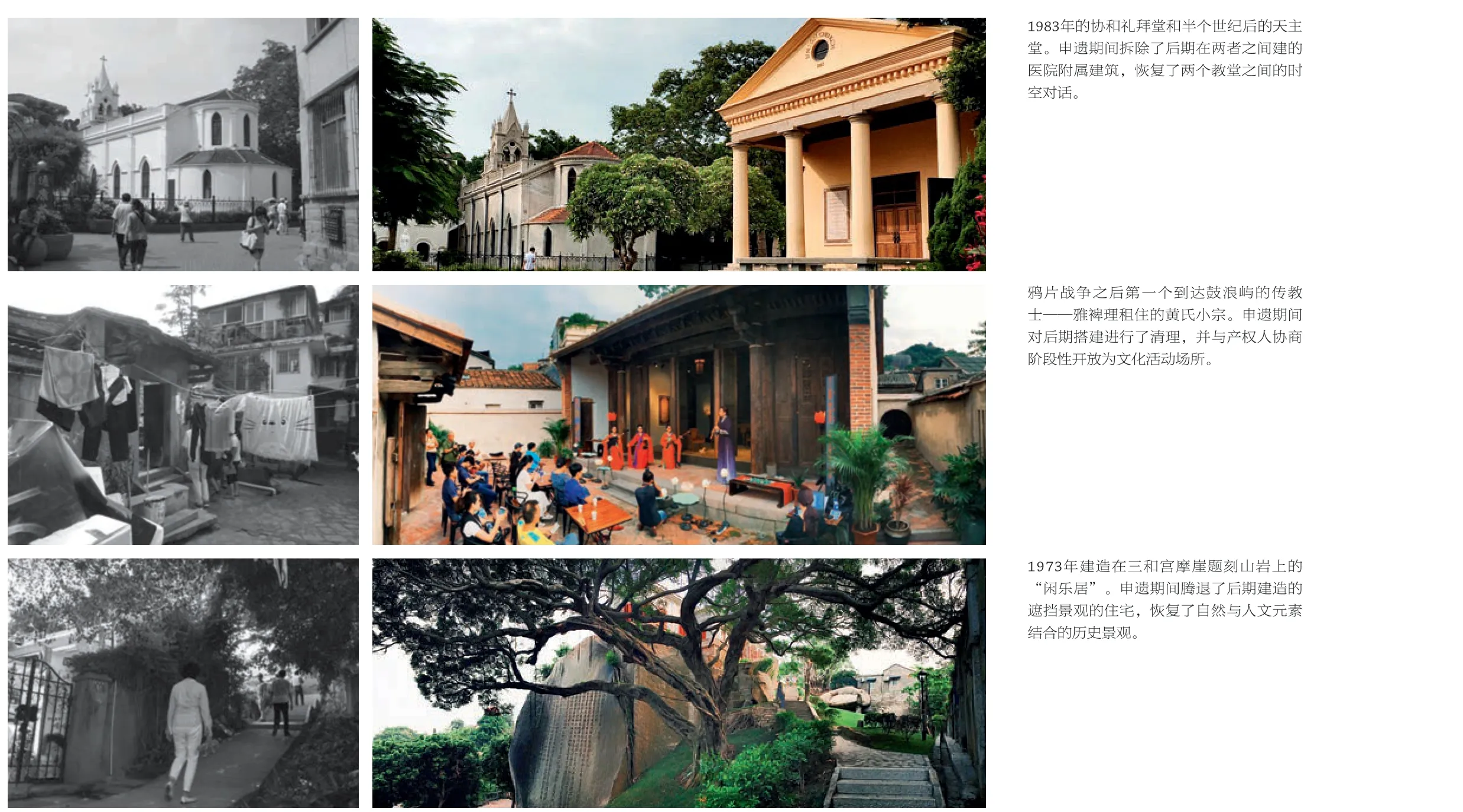
8 申遗阶段恢复的重要历史空间场所
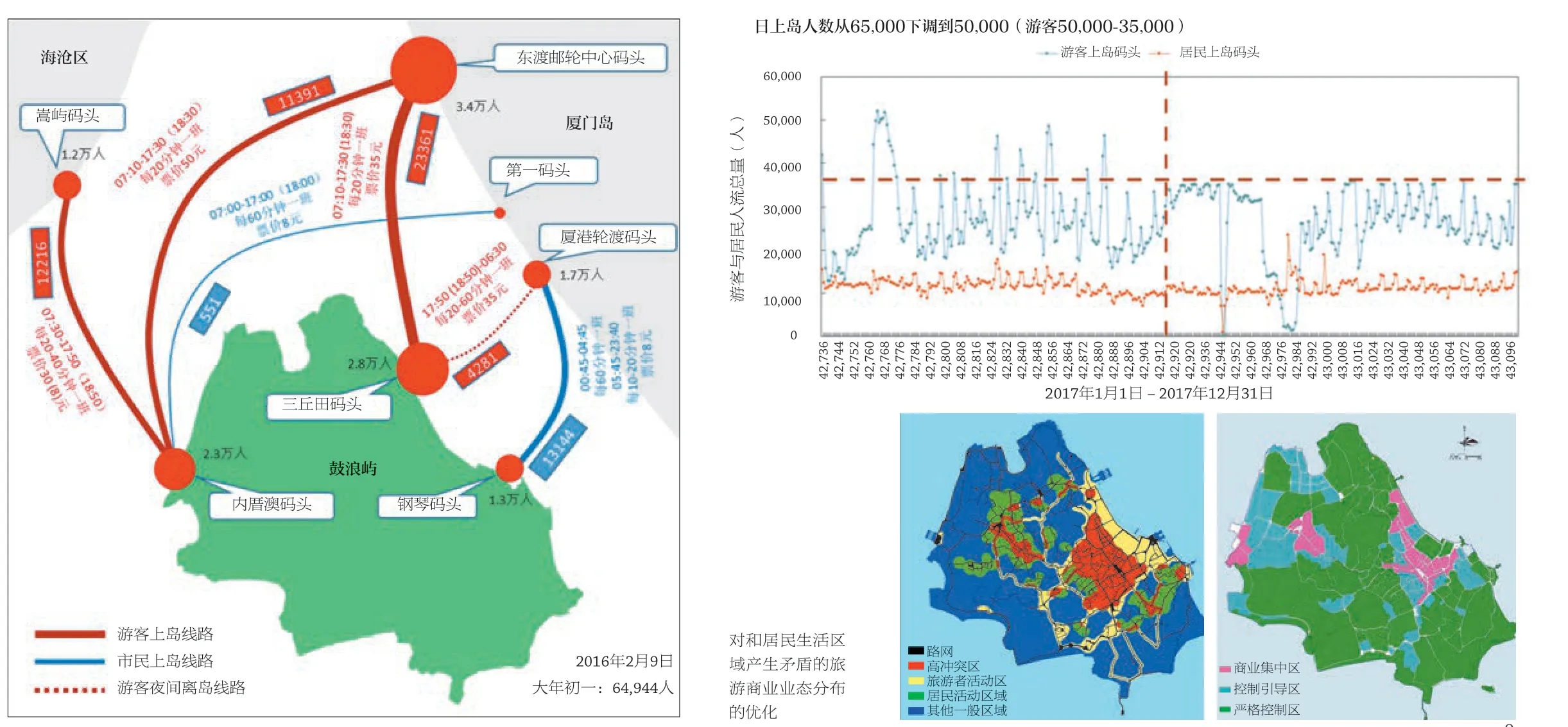
9 对旅游活动和社区生活之间矛盾的调控措施
On July 8th, 2017, Kulangsu-a historic international settlement was inscribed on the World Heritage List at the 41st World Heritage Convention. After nine years of efforts, this historic community, once plagued by tourism boom, has taken a solid and far-reaching step on the road of culture revitalising and sustainable development.
Kulangsu was listed as a national scenic spot in 1988, and established a protection system for historical buildings before 2000. But at that stage, the identity of the public concession made Kulangsu more as the historical evidence of the great powers' bullying China. This makes it difficult for the local community and even the public to establish a deep cultural identity with it. Therefore, the development of tourism is mainly based on sightseeing, and there is a lack of indepth exploration and experience of culture. The rapid growth of tourism also made a negative impact on community life, leading to the loss of local people and the special characteristics of the community.
The value assessment during the nomination process re-examines the formation and development of the historical international settlement of Kulangsu from the perspective of cultural significance. The focus is on the process of the collision, dialogue and integration of cultural elements from all over the world on such a small island at the critical time of globalisation in the 19th and 20th centuries. In particular, the roles of three cultural groups - Minnan ethnic group, the foreign nationals and the returned overseas Chinese. The main reason why Kulangsu was able to break away from the development path of general colonies in the early 20th century is that it continuously absorbs more and more foreign and modern cultural elements, and produces cultural innovation represented by Amoy-Deco style in the integration are the inheritance of traditional culture, tolerance of foreign culture, and pioneering spirit of Minnan Chinese community. This value recognition helped local community understand their heritage from a positive perspective, establishes a link between the Outstanding Universal Value of world heritage and community individuals, and becomes the basis for the community to restore cultural confidence through heritage conservation.
Based on the value assessment, the heritage attributes are constructed more systematically from three perspectives of time, space and society. This not only complements a large number of important historical relics that have been neglected before, presents a complete and true expression of history, but also establishes a closer connection between heritage values and the space of community life.
Due to the change of value cognition, the respect of local communities and the common healthy development of tangible heritage and communities became the most core task under the heritage conservation approach. Beside of the heritage protection and value representation, the important measures include restoration of valuable historical environment to enhance the quality of the community's living environment, open the heritage elements to the community, making them the cultural space for historical art activities, such as family concerts, poetry club activities, etc. Learning from the management model of Kulangsu Municipal Council, the government has guided the establishment of a public conference composed of stakeholders of heritage sites. In order to alleviate the contradiction between tourism and community, the government reduced the maximum daily visitor capacity from 65,000 to 50,000 in 2017, diverted citizens and tourists on the ferry route to ensure the convenience of residents, and at the same time strengthened the rational distribution of tourists to guide and manage and optimise the distribution of tourist business facilities.
The director-general of UNESCO gave a high appraisal on the heritage value of Kulangsu after its successful nomination. The resilience of the heritage community showed out in the fight against typhoon meranti and the active exploration and promotion of the cultural values of Kulangsu by the community after being inscribed are even more gratifying results.□
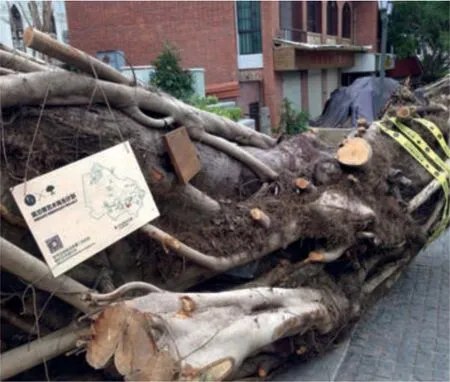

10 莫兰蒂台风抗灾后完成的承载社区生命记忆的公共艺术品 (树干中放置了播放社区不同区域日常生活对话的喇叭)
参考文献/References
[1] 厦门市经济社会发展战略研究办公室, 厦门市计划委员会. 1985年-2000年厦门经济社会发展战略 [M]. 鹭江出版社, 1989: 205-209.
[2] 吕宁, 魏青, 钱毅, 孙燕. 鼓浪屿价值体系研究 [J]. 中国文化遗产, 2017: 4-15.
[3] 钱毅. 鼓浪屿百年建筑风格流变及其背后的文化意义 [J]. 中国文化遗产, 2017: 16-31.
[4] 厦门市人民代表大会常务委员会. 厦门经济特区鼓浪屿世界文化遗产保护条例[OL]. http://www.xmrd.gov.cn/fgk/201907/t20190704_5291186.htm.
项目信息/Credits and Data
项目团队/Project Team: 北京国文琰文化遗产保护中心/CHCC of Beijing Guowenyan
项目规模/Project Scale: 遗产区/Heritage Area: 316.2hm2;缓冲区/Buffer Zone: 886.0hm2
工作周期/Working Period: 申遗文本编制/Application Text: 2009-2016,保护管理规划/Conservation Management Planning: 2009-2013,展示阐释项目/Exhibition and Interpretation: 2015-2016,保护利用工程/Conservation and Reuse: 2015-2017

